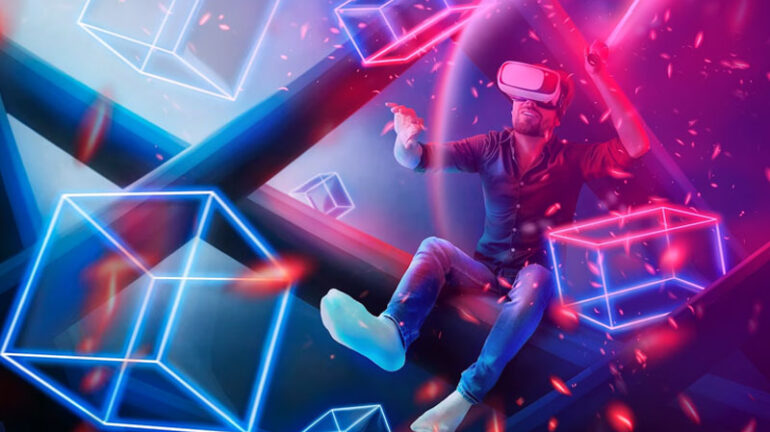
The Metaverse, frequently referred to as the next generation of the internet, and Web 3.0, the framework that underpins it, are fundamentally altering how we interact with the internet today. Let’s first examine the development of the internet in order to comprehend the significance of the Metaverse and Web 3.0. The initial phase of the web, known as Web 1.0, was characterized by static web pages and no user interaction. It served largely as a platform for information sharing. Then came Web 2.0, a major advancement that brought in social media, dynamic websites, and user-generated content. Collaboration and community development were made possible by Web 2.0, which transformed how we engaged online.
We are already on the cusp of the Web 3.0 era, which promises to take our online experiences to new heights. Decentralization, interoperability, and data ownership are the three pillars of Web 3.0. It’s about creating an interconnected, intelligent, and more immersive internet experience, giving birth to the concept of the Metaverse. The Metaverse is a huge, interconnected digital space that extends beyond simple websites and apps. Augmented reality (AR), virtual reality (VR), the Internet of Things (IoT), blockchain, artificial intelligence (AI), and other technologies are coming together. Users can travel around virtual worlds, interact with virtual environments and items, connect with other users, carry out transactions, and even own virtual assets in the Metaverse. Imagine a world where virtual and physical worlds are completely merged, allowing you to play games, socialize, attend virtual meetings, and explore virtual real estate.
Key Pillars of Web 3.0
Web 3.0 serves as the foundation for the Metaverse. It embodies several key pillars that redefine how we perceive and engage with the digital realm:
Decentralization: Web 3.0 is decentralized, shifting away from the centralized models of Web 2.0. It leverages blockchain technology, ensuring that data is not controlled by a single entity. This decentralization enhances security, transparency, and user control over their data and online presence.
Interoperability: Interoperability is about seamless communication and interaction between different platforms and applications. Web 3.0 aims to break down silos and create an integrated digital ecosystem where users can navigate and engage effortlessly across various services and interfaces.
Tokenization and Digital Ownership: Tokens, powered by blockchain, play a crucial role in Web 3.0. They represent digital assets and can be owned, traded, or utilized across applications. This fosters a sense of ownership and value in the virtual space, transforming how we perceive and use digital assets.
Smart Contracts and Automation: Web 3.0 leverages smart contracts, self-executing contracts with terms directly written into code. This automation streamlines processes ensures trust, and facilitates transactions, making interactions more efficient and secure.
The Metaverse in Action
Numerous platforms and projects are already adopting the principles of the metaverse as it starts to take shape. A connected, immersive experience is being created via the integration of virtual reality environments, social platforms, game worlds, and even educational places. Users can participate in decentralized finance (DeFi), buy virtual homes, communicate with AI-driven characters, attend virtual conferences, produce digital art, and more in the Metaverse. These encounters provide a glimpse of a time in which the physical and virtual worlds live without conflict. We are changing how we perceive and interact with digital reality thanks to the Metaverse, which is fueled by the fundamental ideas of Web 3.0. The huge, connected digital environment promises a seamless and engaging online experience.
The Metaverse is changing how we view and interact with digital reality thanks to the underlying ideas of Web 3.0. It’s a vast, interconnected digital universe that promises an immersive and easy online experience. The Metaverse and Web 3.0 will transform industries, economies, and society as a whole as technology develops. It’s an exciting journey into a future where the boundaries between the physical and digital worlds blur, and our online experiences become more enriched, meaningful, and interconnected.